საერთო ცხელი ხაზი +995 577 07 05 63

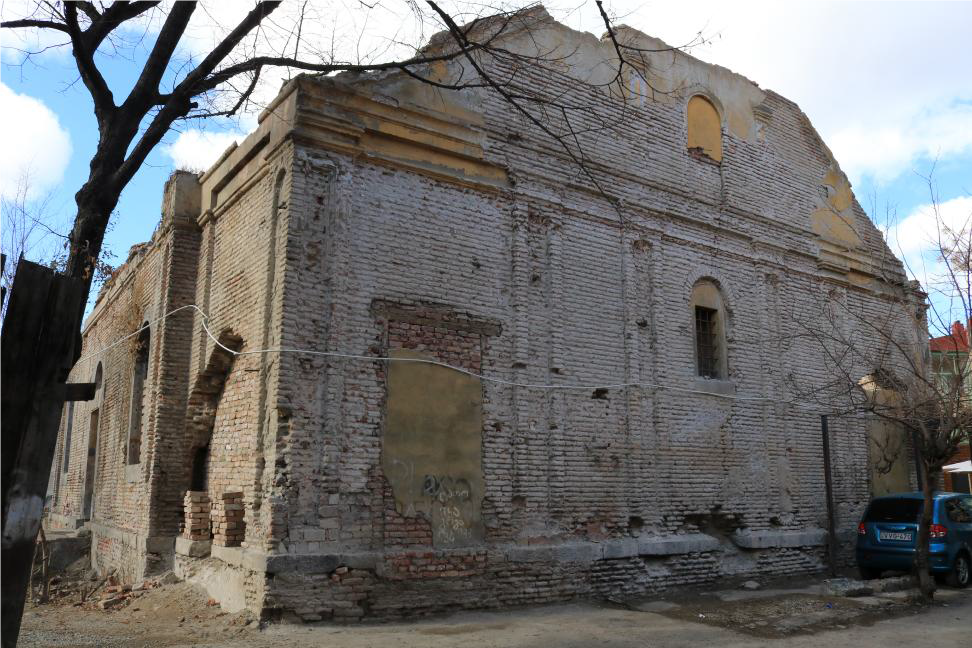
The non-governmental organizations, Human Rights Education and Monitoring Center (EMC) and Tolerance and Diversity Institute (TDI) assess the issue of arbitrary transfer of the historical Armenian Church, located at Agmashenebeli av. N38, in Tbilisi, to the Georgian Patriarchate. EMC and TDI call on the State, to provide the process of return of historical, iconic buildings within the frameworks of human rights standards, and that includes ensuring that the Tandoyants Church is returned to its historical owner. In the given case, EMC and TDI lawyers represent the Diocese of the Armenian Apostolic Church in Georgia in courts and respective administrative bodies.
Review of the Process of transferring the historical Tandoyants Church to the Patriarchate
Tandoyants St. Astvatsatsin (Tandoyants St. Mary Church) in Tbilisi, is situated on Agmashenebli av. 38. Before the Soviet occupation, the church belonged to the Armenian Orthodox Church. Following the decree of 1924 of the presidium of the Tbilisi executive committee on “Tiflis Armenian Virgin Mary Tandoev Religious Society” was closed and taken away from the religious community.
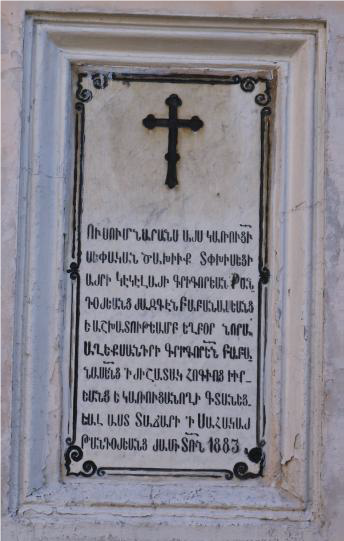
On August 12, 1927, the church building was assigned to the “logistical department of Tiflis executive commission”. Since then, the building has been used in various public capacities.
After the collapse of the Soviet Union, the church building became the State property. The Armenian Apostolic Church has been requesting the return of Tandoyants church (as well, of as other Armenian churches) from the State, however, in vain.
It is noteworthy, that since the restoration of independence, up to 2017,no other religious community, including the Georgia Patriarchate, has expressed any confessional or historical claims or/and interest of the given church.
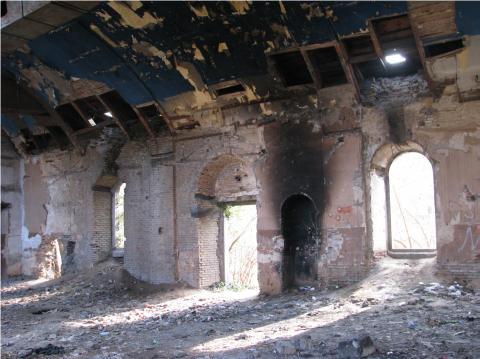
On June 23, 2017, the Georgian Patriarchate applied to the National Agency of Public Registry and demanded registration of the church building located at Agmashenebeli avenue 38 (cadastre code: 01.16.05.025.005.22.500) as the property of Patriarchate of the Orthodox Church. They cited the existence of the ruins of the St. Cross Appearance Church on this site, as their main argument.
Considering the fact that the property rights of the Church belonged to the State, on April 28, 2017, the Diocesan Bishop of the Catholicos-Patriarch of All Georgia Iakob Iakobishvili addressed the Minister of Economy and Sustainable Development with the request to abolish the state property registration on the church.
On 10 July 2017, the National Agency of State Property, by the order N1/1-1600, following the Patriarchate request, abolished the property rights. This allowed the National Agency of Public Registry, on July 26, 2017, to register 4591 sq. m. land and the historical church building, as the property of the Georgian Patriarchate.
National Agency of State Property, as well as, the Public Registry, made the decision without proper study of the confessional and historical belonging of the building. These administrative bodies, without demanding any further documentation or research, based their decision solely on the general information presented by the Patriarchate, according to which: “there are remains of the church, located at Agmashenebli av. 38; the historical sources and maps give us information about it. Namely, on the territory documented as village Kukia for Tiflis, in the plan of 1800-1802, there is a church with fence, with the built in piers in the fence and its garden. This place was also known as "Akhalsopeli" and archival materials confirm that in 1814-1816, under the leadership of the priest, Petre Imnadze, St. Cross appearance Church was built here.”[1]
Currently, the Georgian Patriarchate is carrying out intensive works on the territory of Tandoyants Church; the methods and scope of these works are clearly beyond the scope of research works agreed by the Cultural Heritage Protection Agency and becoming turning illegal. As of February 2018, the foundation of the damaged church was partially dug out, the church's surroundings were cleaned from the ruins and the supposed construction and excavation works were underway. There is a high risk that the current process is damaging the historical and cultural characteristics of the building. The State is not executing proper control over this process.
As it was reported in media, [2] in February of 2018, the old bricks taken from the illegally excavated foundation of Narikala fortress were transported to Agmashenebeli av. N38, on the territory of Tandoyants Armenian Church and they are intended for the construction of a new, three-aisle Georgian orthodox church on the remains of Tandoyants Church.
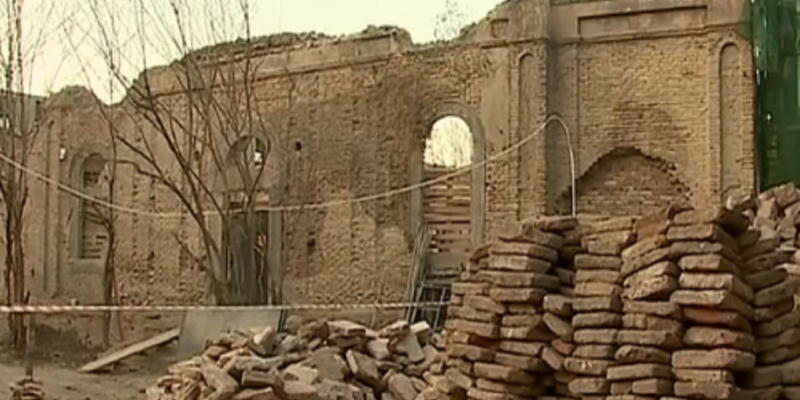
Overview of current legal disputes
On January 5, 2018, the Diocese of the Armenian Apostolic Church in Georgia appealed the decision of the National Agency of Public Registry, based on which, the church located at Agmashenebeli av. N38 was registered as the property the Patriarchate. The plaintiff believes that the National Agency of Public Registry has not studied all the circumstances of the case and the decision has been made without studying the facts of the case and the proper assessment of the issue. The National Agency of Public Registry has not studied the facts about the confessional belonging of the church. Also, the agency neglected the requirements of the legislation and registered the ownership to the Patriarchate without any document establishing the property rights.
On January 5, 2018, the Diocese of the Armenian Apostolic Church in Georgia addressed an administrative complaint to the Ministry of Economy and Sustainable Development of Georgia as a superior administrative body of LEPL "National Agency of State Property". The applicant requested the invalidation of the decision, which based on the information submitted by the Orthodox Church, and without any investigation of the factual circumstances of the case, abolished the State’s property right on the Church and allowed the Orthodox Church to register it in the possession. The plaintiff, in this case, is arguing the legitimacy of the act, since it was not based on objectively and fully studied circumstances and left out the Diocese of the Armenian Church, which had been requesting the return of the church for years.
On February 18, 2018, the Diocese of the Armenian Apostolic Church in Georgia addressed an administrative complaint to the Ministry of Culture and Sport of Georgia, as the superior administrative body of the National Agency for Cultural Heritage Preservation. The applicant requested to quash the work permits issued by the Agency for the Tandoyants Church and suspend the works. The plaintiff indicates that the Patriarchate, as the applicant, did not submit to the Agency the documents envisaged by the "Cultural Heritage Law". The Patriarchate's statement does not indicate the volume of works and the selected methodology that creates a high risk of damage to the Church as a cultural heritage site and its important characteristics and weakens the ability of the State to control the process.
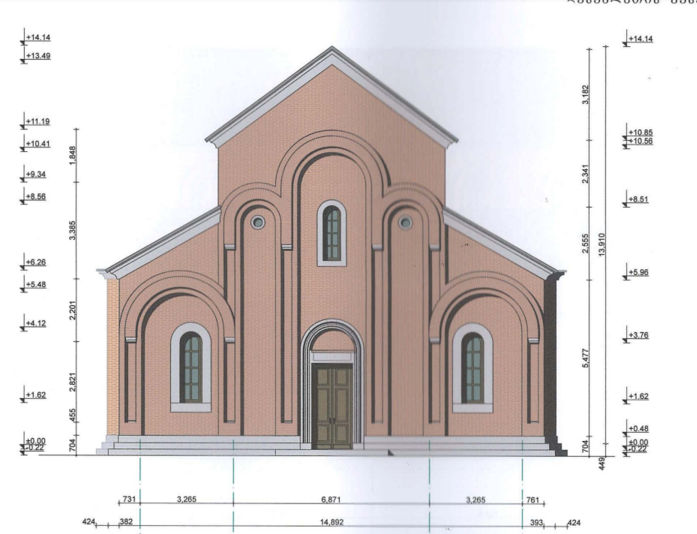
Review of the legal reasoning of an ongoing dispute and its human and social significance
The plaintiff points out that the transfer of Tandoyants Church to the Patriarchate took place without any communication with the Diocese of the Armenian Apostolic Church in Georgia, which indicates the decision was unsubstantiated and illegal.
The analysis of the history of the Tandoyants Church shows that, in the given period, (in village Kukia, at that time), the construction of the Armenian Church started in the 50s of 19th c. In the beginning of 1850s local Armenian parish built temporary wooden church. Later, by 1860, Tandoyants Church was built. It is noteworthy that Armenians started settling on these territories from 1770s. There must have been an old cemetery by 1844 on the territory. After village Kukia became part of Tbilisi and public amenities were organized, the old cemetery was gradually abolished (by 1850, the cemetery is no longer indicated on the map). According the existing historical sources, there is no proof of an existence of another church. Tandoyants Church was confiscated in 1924 from the Armenian Church. Thus, taking into consideration the historical sources and architectural and cultural characteristics of the building, the Armenian origin of the building, is indisputable. In addition, the research indicates the groundlessness of the information submitted by the Patriarchate and the fact that the mentioned Orthodox Church was situated at different location in Tbilisi. Moreover, considering the existing legislation and international standards (The Venice Charter: International Charter for the Conservation and Restoration of Monuments and Sites, 1964), the arbitrary research activities on the Tandoyants Church by the Patriarchate and the project of three-aisle basilica, are illegal. The ongoing and planned works create real danger of destroying the authenticity and cultural significance of the monument.
The case of transferring the historical Tandoyants Church to the Patriarchate once more highlights the acute issues of the absence of the consistent and non-discriminatory policy of restitution of historical iconic buildings confiscated during the Soviet period.
Based on the constitutional agreement, the State recognized the property rights of the dominant church on historical iconic buildings and their ruins, however, left the issue of returning the historical, iconic buildings to the religious minorities without any legal frame, which has been assessed as critical by international and national institutions and organizations working on human rights. The existing discriminatory policy has become the subject of religious and social disagreements on several occasions, and also creates the problem of relevant protection and maintenance of iconic buildings, as cultural heritage. The religious minorities view this State policy as an attempt to eliminate and ignore their historical and cultural legacy, which also affects their integration.
Within the frameworks of the Tandoyants case, EMC and TDI argue that, while arguing restitution cases, the courts must take into consideration the issue of the confessional and historical origin of buildings. The argument of archaeological layers is devoid of legal base, as well as, the logic of cultural heritage protection. Armenian heritage of Tandoyants Church has been documented by the documents officially recognized by the State, which again demonstrates the arbitrary character of the given decision. The transfer of the Armenian Church to the Patriarchate is a clear example of loyalty towards the dominant church and the discrimination of Armenian orthodox community. The Tandoyants Church case is important as a precedent, since other religious unions face the similar problems. The just decision by the court may change the existing discriminatory policy in a positive way.
Considering the interest towards the case, EMC and TDI will further update the society on the ongoing case.
The first court session in the case against the National Agency of Public Registry will be held at the Tbilisi City Court on March 13, 2018, at 12:00.
[1] Analysis of the document confirming the origin of the church and the process of transfer to the Patriarchate http://www.tdi.ge/ge/news/494-xelisuplebam-tandoiancis-eklesia-sakartvelos-sapatriarkos-gadasca
The website accessibility instruction